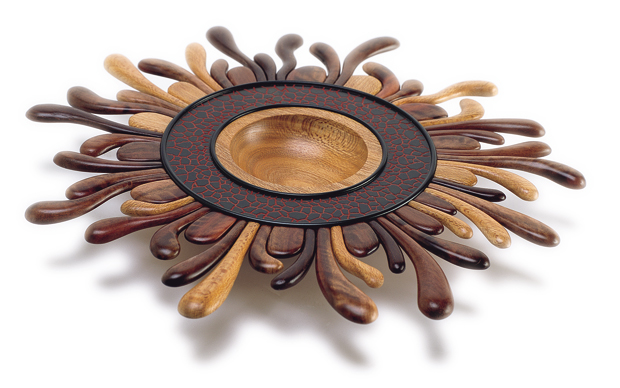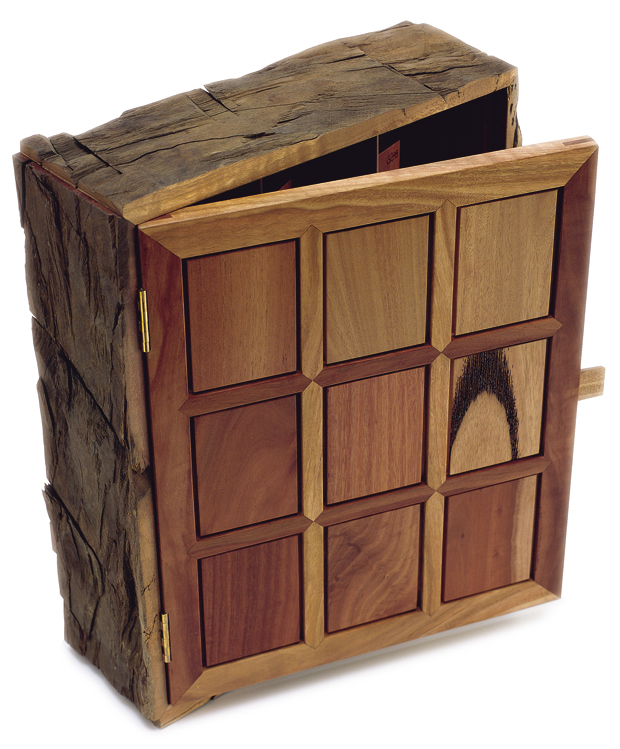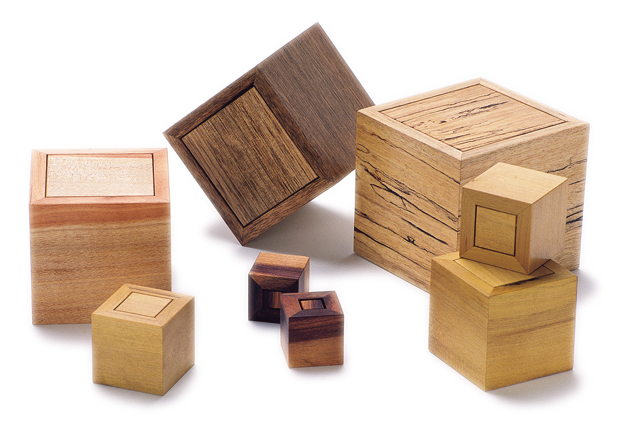A diverse and beautiful display of woodwork was instigated and mounted by Craft ACT some 16 years ago. Eric Dadswell was a scientist who, in the 1930s, researched Australia’s native forests, collecting samples of species which were thought to have commercial potential. The samples he collected came to be known as the ‘Dadswell Collection’ and, like other timber collections provided the basis for research into the commercial applications of wood.
Research on Australia’s native timbers some time after Federation and R.T. Baker’s Hardwoods of Australia was amongst the first works which described native hardwoods. C.E. Carter further researched eucalypt species from the point of view of their commercial applications. Eric Dadswell worked with him in the late 1920s and later assumed responsibilities at CSIR Forest Products Division in Melbourne. His team looked at the wood anatomy of native species and published several works. Eventually Dadswell became Chief of the Forest Products Division in 1960 until his death in 1964. The work done during that period was the basis of our current knowledge of the wood anatomy of native species.
During the previous decade the collection was reduced in physical size—smaller samples were cut from billets and retained as part of CSIRO’s existing collection. The offcuts of the billets were crated and relegated to an outdoor storage area and the makeshift protection of a tarpaulin. Some of these have now been converted into objects which symbolise and exemplify their orginal beauty. Some of the samples are from trees which are now rare and in some cases even extinct. Some of the species are not commercially available, growing as they do in areas which have been declared National Parks.
A selection of these ‘de-accessioned’ samples from the Dadswell Wood Collection were distributed to a group of woodworkers who crafted the items shown on these pages. The makers who were selected to take part in ‘Rings of History: Contemporary Craft from Historical Timbers’ were sent samples sourced from the areas they live in. The works themselves were identified as exploring three themes within the exhibition.
‘Collection of a Collection’ included works by Ian Guthridge, Graham Kilian, Luis Nheu, Adrian Potter and Bo Schmitt. These works were said to address ‘the history of taxonomy, the fascination for systems of nomenclature, taming the unknown with words, cabinets of curiosity’.
‘Crafting Traditions’ focussed on skills of making which have evolved from working our hard native timbers. Works by Georgina Donovan, Anthony Hansen, Claire Owen, Niningka Lewis, Ian Munday, Topsy Tjulyata and Keith Towe were featured here.
‘Environmental Shifts’ referred to issues of conservation and sustainability as explored in pieces made by Matthew Harding, Peter Lowe, Kevin Perkins, Roy Schack, Andrew Wood and Damien Wright.
The interesting connection of scientific research carried out in the 1930s and a group of new millennium designer/makers highlights their common appreciation of wood as a valuable resource. The sad fact that some of the species involved are now extinct or in short supply reminds us of the importance of preserving native forests.
The ideas above are expounded and developed in the accompanying catalogue to this exhibition which includes essays by Dr Phil Evans, reader in Wood Science, ANU, Catrina Vignando, acting executive director, ACT Craft and Design Centre and curator, Ruth Lane, curator People and Land Section National Museum of Australia.
Photos: Steven Murray
Rings of History: Contemporary Craft From Historical Timbers is reprinted here from issue 32 of Australian Wood Review, published September 2001

Above: ‘Rain Dance’, Broome bloodwood, red morel, pine banksia, western woody pear , by Peter Lowe, WA.

Cabinet in brown stringy bark, narrow-leaved ironbark, pink gum, black box, brown-top stringybark, grey irongum, mugga ironbark and forest redgum by Adrian Potter, SA.

‘A Forest of Seeded Boxes’, red tweedie, bulls breath, pepper berry canary sassafras, black myrtle and black tulip, made by Roy Schack, Qld.





